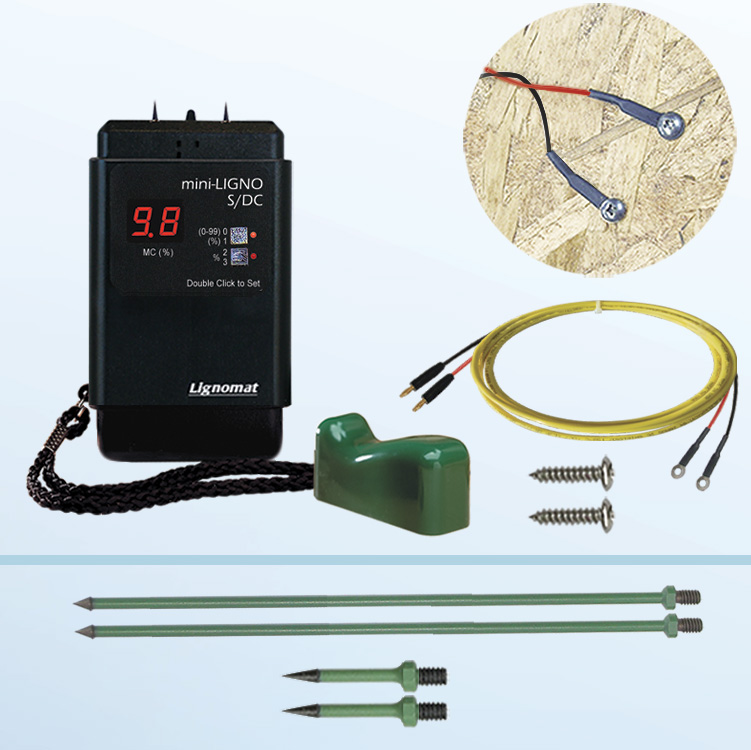The Ultimate Overview to Picking the Right Moisture Meter for Your Requirements
The Ultimate Overview to Picking the Right Moisture Meter for Your Requirements
Blog Article
The Ultimate Overview to Wetness Meters: A Comprehensive Summary and Just How They Can Conserve You Money
Moisture meters serve as crucial tools in detecting and checking moisture web content in materials, aiding in stopping costly problems and guaranteeing the quality of items. Comprehending the nuances of various types of dampness meters, their applications, and the potential cost-saving advantages they provide can be a game-changer for businesses and experts alike.
Sorts Of Moisture Meters
Various sorts of moisture meters are offered for different applications in different sectors. One common kind is the pin-type wetness meter, which measures the electric resistance in between 2 pins put right into a product. This kind appropriates for timber, drywall, and other building materials. Pinless wetness meters, on the other hand, use electromagnetic sensing unit plates to check a larger area without triggering damages to the material's surface area. Moisture Meter. These meters are excellent for promptly assessing wetness degrees in huge locations such as floors and walls.

Infrared wetness meters gauge the thermal residential properties of a product to determine its moisture content non-invasively, making them valuable for applications where pin or pinless meters may not be ideal. Understanding the various kinds of dampness meters readily available can help markets choose the most ideal tool for their particular wetness measurement demands.

Advantages of Utilizing Moisture Meters
Moisture meters provide very useful advantages in precisely checking and analyzing wetness levels in diverse products and environments. One of the key advantages of utilizing moisture meters is the avoidance of potential damage created by excess moisture.
Furthermore, utilizing dampness meters can cause increased power effectiveness. By identifying areas with high dampness levels, such as leakages or inadequate insulation, changes can be made to enhance power conservation and reduce utility prices. In farming setups, dampness meters play a vital function in optimizing crop returns by making it possible for farmers to keep an eye on dirt moisture levels and make educated watering decisions. On the whole, the benefits of utilizing moisture meters extend across numerous markets, offering economical remedies and promoting far better quality assurance practices.
Just How to Select the Right Dampness Meter
Picking the suitable dampness meter involves taking into consideration essential factors such as material compatibility, measurement array, and calibration precision. When choosing a wetness meter, it's necessary to make certain that the meter is appropriate for the certain product you will be testing. Various materials have varying electric residential properties that can affect moisture readings, so choosing a meter made for your product is essential for exact results. Additionally, consider the dimension series of the wetness meter. Ensure that the meter can discover wetness degrees within the variety required for your applications. Calibration accuracy is an additional crucial variable to remember. Choose a moisture meter with reliable calibration to make certain consistent and precise analyses. Some meters might require routine calibration modifications, so understanding the calibration procedure is very important. By very carefully reviewing these variables, you can pick a wetness meter that fulfills your needs and supplies precise dampness measurements for your tasks.
Correct Methods for Dampness Meter Usage

Expense Cost Savings With Moisture Meter Applications
How can the strategic application straight from the source of dampness meters lead to considerable price savings throughout various sectors? In the farming market, dampness meters aid in identifying the optimal time for harvesting plants, avoiding over-drying or excess moisture that can affect the final item's high quality.
In a similar way, in building and construction, wetness meters assist avoid pricey problems by discovering wetness levels in building products, such as wood or concrete, which can result in architectural issues if not dealt with without delay. By identifying issue locations early, contractors can take corrective steps to stay clear of considerable repair services or replacements, ultimately conserving time and cash.
Additionally, in the food processing market, dampness meters are essential for monitoring item top quality and guaranteeing conformity with safety guidelines. By accurately determining moisture content this page in foodstuff, manufacturers can avoid wasting, maintain quality, and minimize waste, resulting in substantial price financial savings. Overall, the tactical application of wetness meters is a beneficial financial investment that can lead to substantial expense reductions and improved effectiveness throughout various markets.
Final Thought
In verdict, dampness meters are valuable devices for determining and identifying wetness levels in various materials. By making use of the best wetness meter and adhering to proper methods, users can efficiently prevent pricey problems caused by excess moisture.
Dampness meters serve as essential devices in discovering and monitoring moisture material in materials, aiding in stopping pricey problems and making certain the quality of products. Infrared dampness meters gauge the thermal properties of a material to click here to find out more identify its moisture content non-invasively, making them helpful for applications where pin or pinless meters may not be appropriate.Moisture meters provide very useful benefits in properly monitoring and analyzing moisture levels in diverse products and atmospheres. In agricultural settings, moisture meters play a critical duty in optimizing plant returns by enabling farmers to check soil dampness degrees and make notified watering decisions.In conclusion, wetness meters are useful tools for spotting and measuring dampness degrees in numerous products.
Report this page